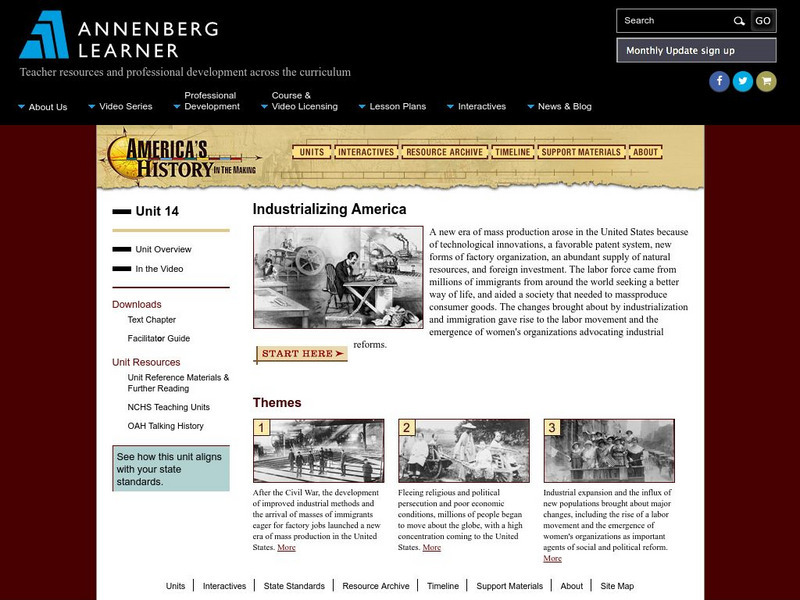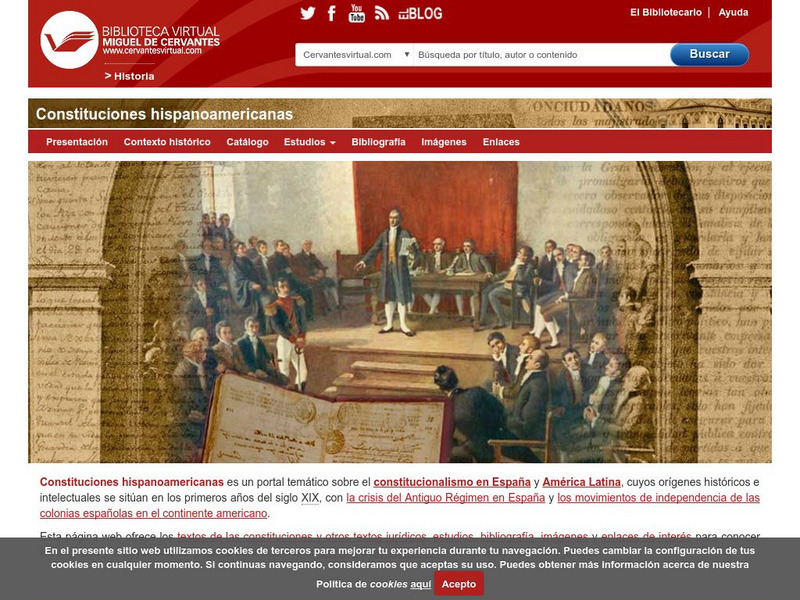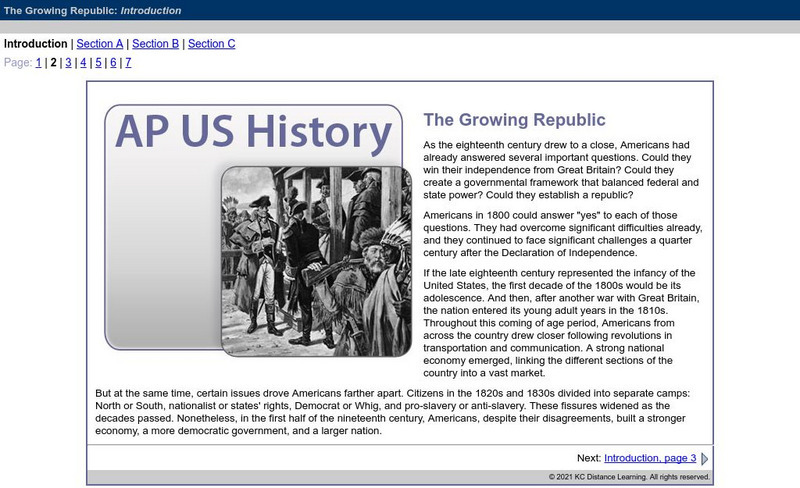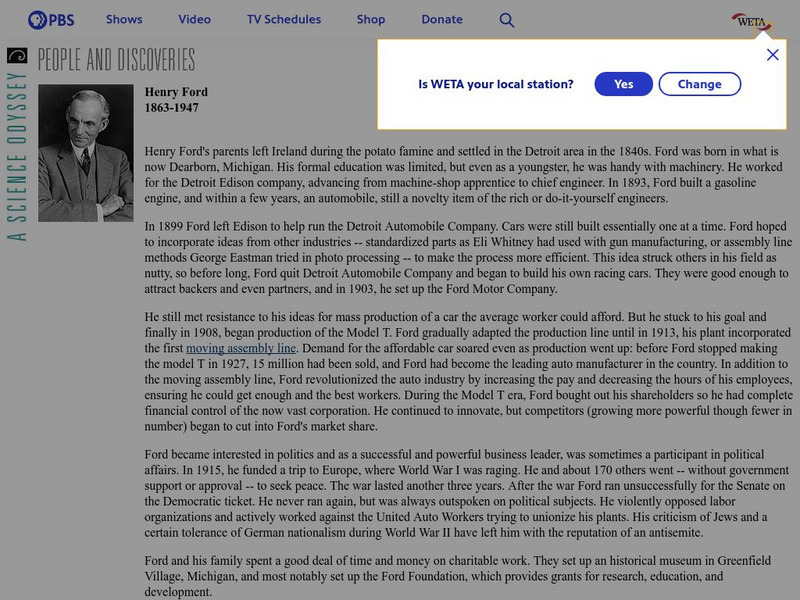Pennsylvania Department of Education
Seeing Doubles
Young scholars work with dominoes to recognize the number of spots on each side as they relate to addition facts. In this seeing doubles lesson, students make triangle shaped flash cards for the double facts. Young scholars represent the...
Council for Economic Education
Econ Ed Link: Henry Ford and the Model T: A Case Study in Productivity (Part 2)
Henry Ford's use of mass production strategies to manufacture the Model T revolutionized industrial manufacturing. This 3-part learning unit provides students with the story of Henry Ford and the Model T from an economics perspective....
Council for Economic Education
Econ Ed Link: Henry Ford and the Model T: A Case Study in Productivity (Part 1)
Henry Ford's use of mass production strategies to manufacture the Model T revolutionized industrial manufacturing. This 3-part learning unit provides students with the story of Henry Ford and the Model T from an economics perspective....
Council for Economic Education
Econ Ed Link: Henry Ford and the Model T: A Case Study in Productivity (Part 3)
Henry Ford's use of mass production strategies to manufacture the Model T revolutionized industrial manufacturing. This 3-part learning unit provides students with the story of Henry Ford and the Model T from an economics perspective....
PBS
Pbs Learning Media: The Impact of Technology: Cars
This video segment adapted from A Science Odyssey looks at the invention of the automobile and the development of mass production. [4:21]
American Chemical Society
Middle School Chemistry: Controlling Amount of Products in a Chemical Reaction
Students analyze the chemical equation for the reaction between vinegar and baking soda. They observe that the gas produced in the reaction is also part of the products of the written chemical equation.
Tutor2u
Tutor2 U: Economies of Scope
This site is an explanation of several factors that impact mass production. Primarily, the concept of economies of scope is explored.
TryEngineering
Try Engineering: Assembly Line
The core of this lesson is about the power of mass production. Students will first assemble a product individually, then work in teams to design, build, test, and redesign an assembly line whose product must meet quality control...
Other
Bringing History Home: Industrialization History
This 3rd grade unit introduces the history of industrialization in the United States in the late 19th century. The development of mechanization and assembly line processes, reliance on unskilled labor, and geographic concentration of...
Annenberg Foundation
Annenberg Learner: America's History in the Making: Industrializing America
Comprehensive teaching unit that explores the "second industrial revolution" and the mass production of consumer goods. This, in turn, caused an increase in the labor force and immigration. Learn how these changes brought about the start...
Khan Academy
Khan Academy: The Growth of Suburbia
The GI Bill made it possible for World War II veterans to finance the purchase of a house. This, combined with mass production of houses, led to the growth of suburban communities, including three Levittown suburbs.
PBS
Pbs Learning Media: Global Oneness Project: Rethinking the Fabrics We Wear
In this lesson, students examine natural and synthetic fibers. Students explore the photo essay in groups and discuss how the sheep farmer offers an alternative to mass production with a focus on the themes of resiliency and...
National Humanities Center
National Humanities Center: America in Class: America in the 1920s: Prosperity: Consumerism
The National Humanities Center presents collections of primary resources compatible with the Common Core State Standards - historical documents, literary texts, and works of art - thematically organized with notes and discussion...
PBS
Pbs: Who Made America?: Innovators: Eli Whitney
One-page profile of influential innovator, Eli Whitney, whose vision and ideas created the cotton gin and what would later be known as "mass production".
Digital History
Digital History: Formation of Modern American Mass Culture
A mass culture developed in America in the 1920s due to several factors. Read about the influence of radio, movies, and spectator sports in the adoption of common speech. Find out about the creativity of the time in literature and music.
Digital History
Digital History: Early Industrialization
Advances in technology affected manufacturing in the North and farming in the South. Read about how America turned from a country where most products were made in the home to an economic power that used factory production.
Other
Introduction to Anthropology: Taylorism and Fordism
Read about the precepts of Frederick Taylor and Henry Ford in their applications of scientific business management that improved productivity and increased output of consumer goods.
Biblioteca Virtual Miguel de Cervantes
Datos Estadisticos De Hispanoamerica
This resource has a comparison of statistical data on all Spanish-speaking countries. Countries are compared and ranked according to land mass, population, population density, annual population growth, life expectancy, infant mortality...
American Chemical Society
Middle School Chemistry: Lesson Plans: What Is a Chemical Reaction?
After observing a demonstration of a chemical reaction between a burning candle and the oxygen in the air, students use atom model cut-outs to model the reaction and see that all the atoms in the reactants show up in the products.
Department of Defense
Do Dea: Ap Us History: Unit 3: The Growing Republic
This extensive learning module examines how the United States' efforts to increase foreign trade, add new territory, and isolate itself from Europe affected its foreign policy and other initiatives. It investigates how advances in...
Northwestern University
Weinberg College of Arts and Sciences: Second Industrial Revolution [Pdf]
A lengthy essay on the Second Industrial Revolution in Europe and the United States in the late 19th and early 20th centuries. The author looks at seven major aspects of technology that were affected by the revolution and makes...
PBS
Pbs: Henry Ford: People and Discoveries
This site is a brief biographical sketch on Henry Ford and includes links to topics related to mass production (such as the moving assembly line).
University of Massachusetts
University of Mass.: Bread, Cereal, Rice, and Pasta
At this website from the University of Massachusetts you can read about the different foods that make up the bread group in the food pyramid. Learn about the nutritional value of bread, cereal, rice, and pasta, and read about the...
BBC
Bbc: Gcse Bitesize: Calculations for All Students
Law of conservation of mass: No atoms are created or destroyed in a chemical reaction. They just join together in a different way than they were before the reaction, and form products. This means that the total mass of the products in a...
Other popular searches
- Early Mass Production
- Mass Production Food
- Simulation Mass Production
- Industry Mass Production
- 1920s Mass Production
- Mass Production Simulation
- Graphing Mass Production
- Product Mass Production
















![Weinberg College of Arts and Sciences: Second Industrial Revolution [Pdf] Website Weinberg College of Arts and Sciences: Second Industrial Revolution [Pdf] Website](http://content.lessonplanet.com/resources/thumbnails/410101/large/bwluav9tywdpy2symdiwmduymc0xotc1ni0zym91n3yuanbn.jpg?1589985410)


